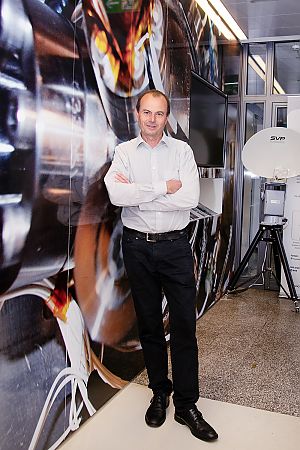Space technology for everyday life

Styria has been considered a hotspot of Austrian space research for about thirty years. What is the international visibility like?
The international visibility is very good in the professional scene. Especially in Europe, when we think of ESA, Graz and JOANNEUM RESEARCH have a very good name. Our reputation extends beyond ESA, of course. Be it the Rutherford Appleton Laboratory (UK), the German Aerospace Center (DLR) or prominent European universities - we are known both as a competitor and as a partner. Of course, the other domestic research institutions such as the IWF of the Austrian Academy of Sciences, Graz University of Technology or the University of Graz contribute to our international visibility. Beyond Europe, things become a little more differentiated. Our 2D video distrometers, which we build in small series, are used by NASA, for example. But we also have orders from Asia. For the general public, we are more visible on occasion, such as recently with the launch of the W-CubeSat or with the image analysis of the Mars Rover.
Space topics, such as the recent landing of the Mars rover or space tourism, have enjoyed a broad media echo in the recent past. What makes space topics so attractive?
It's the excellence and uniqueness of the research. But above all, space still exudes an enormous fascination in our society, which is flooded with information. We are trying to think outside the box, so to speak, and pursue the question of what is out there.
You and your team have produced outstanding innovations, keywords are W-CubeSat, 2D video distrometer or the infrastructure of the Hilmwarte. What's next, what is your vision?
We have been following a common thread for decades. Even though we always try to achieve success with niche products, it's all about signal processing, making it faster and faster and more broadband. In this area, we are currently starting two thematically related projects with a total project volume of 900,000 euros. The aim is to create a platform where users can test broadband, fast signal processing. Our second hobbyhorse is navigation. We are also working on producing new small series in this area. This is very important for us in terms of self-financing and commercial success.
You lead a successful international research group. What makes your team so strong?
The strength lies in the technical competence, that is the basic prerequisite. And we are very good at locating current needs. We constantly ask ourselves where we can make a difference, in which area we can build small series and which niches we can use. What makes me very proud is the team spirit. We are a really good 'we'.
Big topic sustainability: How do space technologies and sustainability fit together?
Our group is mainly about satellite and navigation services, i.e. space technology for everyday life. And that already brings us to sustainability, because with these technologies, for example, international online meetings are made possible easily, without travel. With satellite communication, you can get to any point on earth. And with navigation technologies, distances can be shortened.
Let's assume space travel were possible and easy to do. What would you like to see and experience?
I would think the view of our Earth from space is certainly something very special and literally changes the horizon. And I would love to experience what weightlessness feels like.
